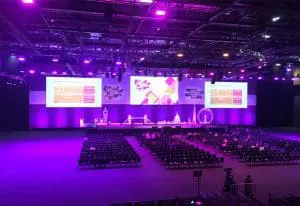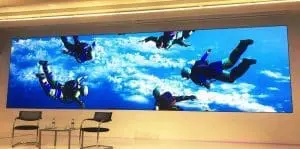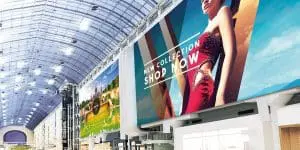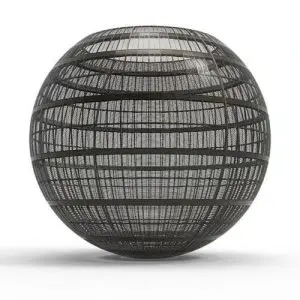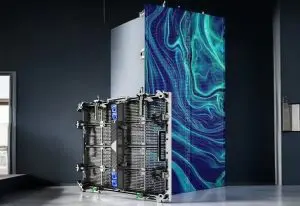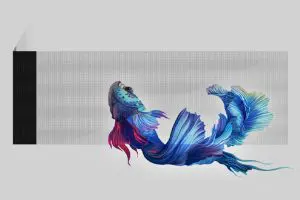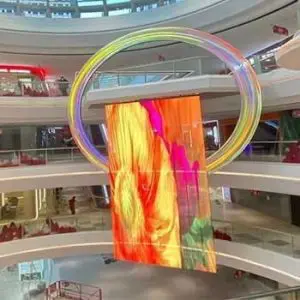Flexible Transparent LED Screens are redefining the way we experience visual storytelling. Imagine walking into a high-end fashion boutique: the glass wall in front of you glows with vibrant moving images—a model struts down a runway, a logo shimmers, and behind it, you can still see the carefully arranged display inside. Nothing feels blocked, nothing looks forced. That’s not magic—it’s cutting-edge display technology in action.
What role do flexibility and transparency play in LED screens?
In 2025, commercial displays aren’t just about sharp resolution or massive size—they’re about seamless integration into real-world environments. LED Screens offer a new standard: they curve with architecture, let natural light pass through, and transform static spaces into dynamic visual experiences without blocking visibility. This is how display technology is evolving—from being a standalone feature to becoming part of the design itself.
That’s where flexible transparent LED screens come in.
- They bend. Whether wrapping around a column or flowing across a curved window, their soft, lightweight materials make them a designer’s dream.
- They breathe. With 60%–90% transparency, they let natural light pass through, preserving spatial openness while delivering powerful visuals.
- They adapt. From product launches to permanent architectural features, these screens shape-shift to fit both creative ambition and physical space.
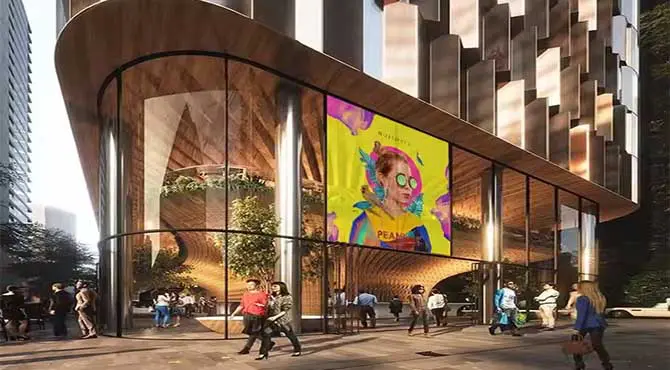
Real-World Scenarios That Prove Their Impact
- Retail Windows with Wow Factor
A flagship store on a busy shopping street doesn’t just need foot traffic—it needs attention. Traditional screens often block views and clutter the design. A flexible transparent LED screen solves that problem. It displays content that grabs attention without covering up the carefully curated window behind it.
Brands like Apple and Nike have already leaned into transparent visuals for dynamic storefronts. But now, with flexible versions, even small stores can add motion to their windows—without losing the openness that glass provides.
- Event Stages That Feel Alive
Forget the boring black screens. Think curved LED ribbons flowing behind performers, or semi-transparent backdrops that shift with lighting cues. Flexible transparent LED screens bring motion, depth, and interaction to concerts, product launches, and exhibitions.
They also allow lighting and stage effects to pass through, enabling more creative layering of visuals and physical props. The result? A more immersive audience experience.
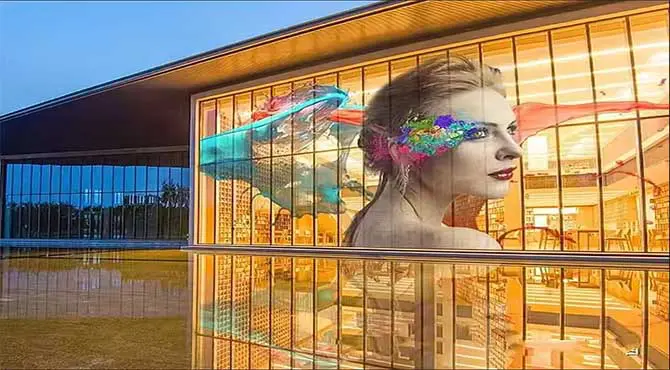
- Architecture that Communicates
A modern building façade isn’t just steel and glass anymore—it’s a canvas. Architects are now using flexible transparent LED screens on curved walls, domes, and glass towers to create living surfaces that respond to time, weather, or events.
And because these screens let light through, they don’t darken the building’s interior like traditional billboards. It’s media with minimal footprint.
- Museums and Art Spaces That Move
Curators often want digital elements, but without overwhelming the physical exhibits. Transparent flexible screens let animations, videos, or even digital storytelling flow across glass cases or walls, without hiding what’s behind.
They add life and interactivity—without stealing the show.
Key Features That Make a Difference
| Feature | Why It Matters |
| Bendable Structure | Wraps around curves and corners effortlessly |
| High Transparency (60–90%) | Keeps spaces open and naturally lit |
| Ultra-Thin Design | Easy to install on glass, walls, or frames |
| Modular Sizing | Customize shapes and sizes as needed |
| Bright and Vivid Output | Visible even in daylight conditions |
| Lightweight Materials | Reduces need for heavy mounting structures |
Choosing the Right One for Your Needs
Instead of asking, “Which screen is best?”, start by asking, “What’s the story we want to tell?”
- For high-end boutiques, a screen with higher transparency and smaller pixel pitch (e.g., 3.9mm) offers clean visuals without blocking displays.
- For large events, a model with more brightness and larger pitch (e.g., 7.8mm or 10mm) balances performance and cost.
- For architectural facades, flexible modules with high weather resistance and wide viewing angles are ideal.
Performance Comparison Table
Here’s a general idea of the price range for common models:
| Specification | Indoor Optimal | Outdoor Optimal | Importance |
| Pixel Density | P3.9-P7.8 | P10-P16 | Image clarity |
| Brightness | 3000-5000nits | 6000-8000nits | Visibility |
| Transparency | 70-85% | 60-70% | Background view |
| Power Draw | 200-400W/m² | 500-800W/m² | Operational cost |
Note: Prices can vary based on project complexity, custom shapes, and controller system choices.
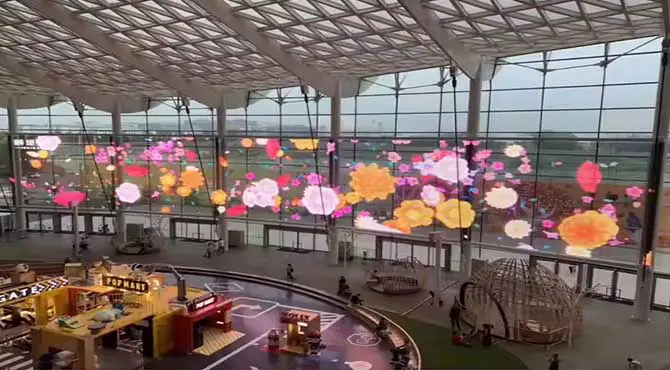
A Word About Brands: Big Names vs. Smart Choices
Some global brands price their screens high due to marketing and brand premiums. But many lesser-known manufacturers in China are producing equally durable, high-performing flexible transparent LED screens—often at a fraction of the cost.
Here’s why:
- They use the same core components (like NationStar LEDs or Novastar control systems).
- They offer OEM flexibility, so you can request custom shapes, brightness levels, or even waterproofing.
- Many focus exclusively on flexible transparent screens, making them specialists—not generalists.
In short, you’re not sacrificing quality—you’re just avoiding the label markup.
2025 Pricing Overview
| Configuration | Price Range (USD/m²) | Best Applications |
| P3.9 70% Transparent | 2,800−2,800−3,600 | Luxury retail |
| P7.8 80% Transparent | 1,900−1,900−2,700 | Corporate environments |
| P10 85% Transparent | 1,300−1,300−2,100 | Large-scale installations |
Comprehensive Buying Guide
Selection Criteria
- Environmental Factors:
- Indoor/outdoor requirements
- Ambient light conditions
- Temperature ranges
- Technical Requirements:
- Viewing distance considerations
- Content type (video/static)
- Installation surface
Emerging Trends and Future Outlook
-
- Interactive Capabilities:
- Touch integration
- Motion sensor activation
- Interactive Capabilities:
- Sustainability Features:
- Solar-hybrid models
- Reduced power consumption
- Advanced Integration:
- AR compatibility
- AI-driven content adaptation
Emerging Trends and Future Outlook
- Interactive Capabilities:
- Touch integration
- Motion sensor activation
- Sustainability Features:
- Solar-hybrid models
- Reduced power consumption
- Advanced Integration:
- AR compatibility
- AI-driven content adaptation
For professional consultation and custom solutions, [contact our expert team] today to discuss your specific project requirements.
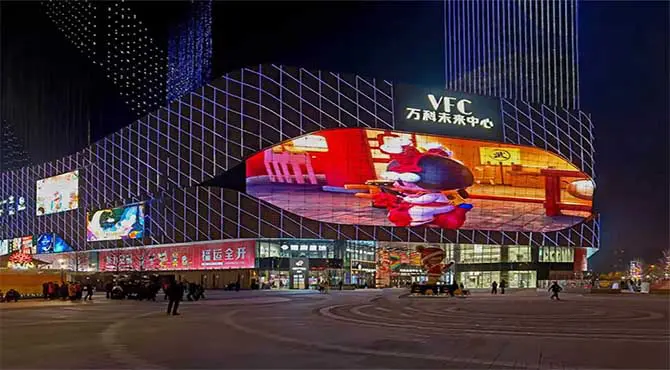
Frequently Asked Questions
Q: How does transparency affect image quality?
A: Advanced algorithms compensate for transparency with optimized brightness and contrast.
Q: What’s the lifespan of these displays?
A: 50,000-100,000 hours with proper maintenance (≈10-15 years).
Q: Can they be used in curved installations?
A: Yes, specialized versions support radii from 30° to full 180° bends.
Q: Are flexible transparent LED screens suitable for outdoor use?
A: Yes, many models are designed with weather-resistant materials and high brightness (6000–8000 nits) to perform reliably in outdoor environments.
Q: How thin and lightweight are these displays?
A: Most flexible transparent LED screens are ultra-thin (as little as 2–5mm) and lightweight, making them ideal for mounting on glass walls, windows, or custom structures without heavy supports.
Q: Can content be customized for different shapes and sizes?
A: Of course. Thanks to the modular design and flexibility of LED screens, the shapes can be customized according to customer needs – whether it is wrapping around a column, forming a wave, or covering an irregular surface.
Flexible transparent LED screens are more than a technical upgrade. They represent a shift in how we use digital content—not as decoration, but as integration.
They let us add motion without weight. Storytelling without blocking. Visibility without distraction.
So whether you’re planning your next flagship store, exhibition booth, or smart building, ask yourself: What would it look like if your space could breathe and speak at the same time?
Chances are, it looks like a flexible transparent LED screen.









